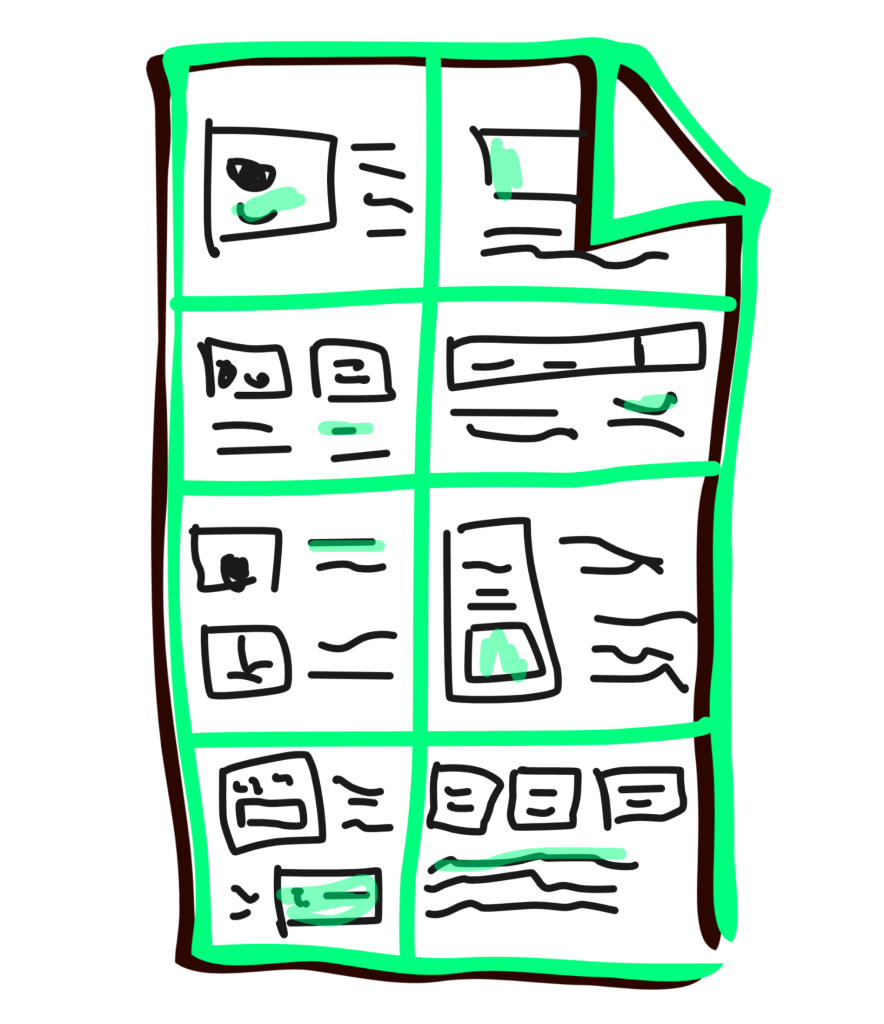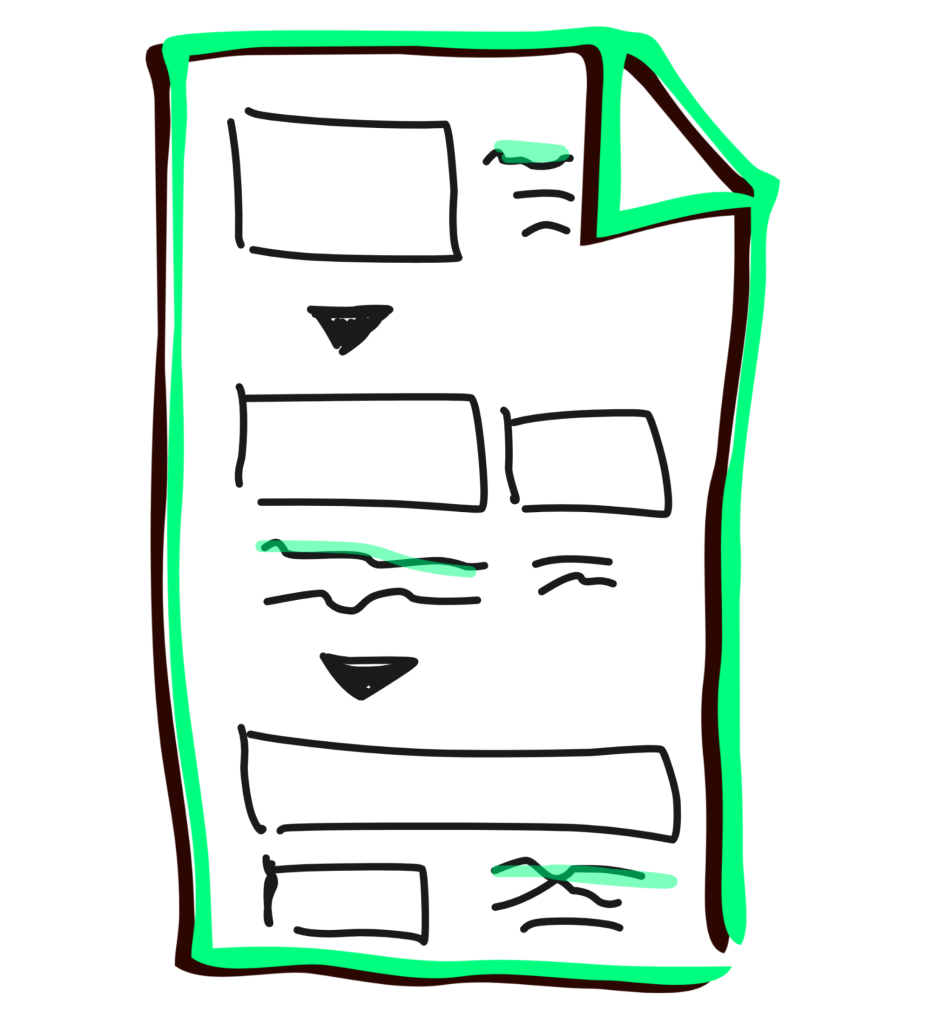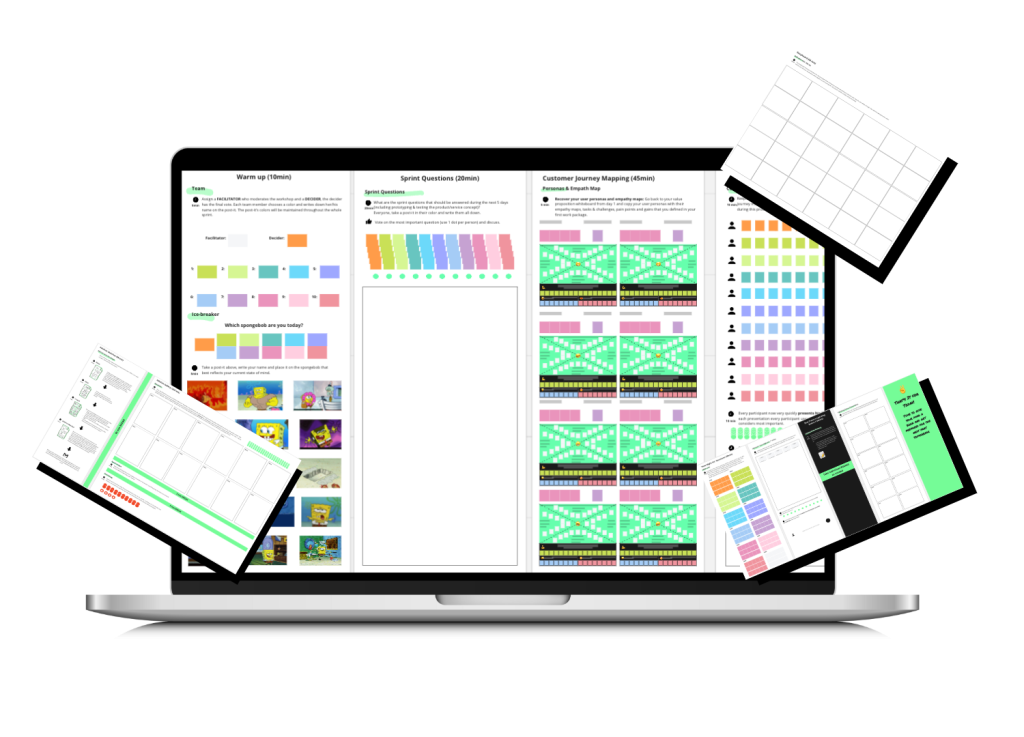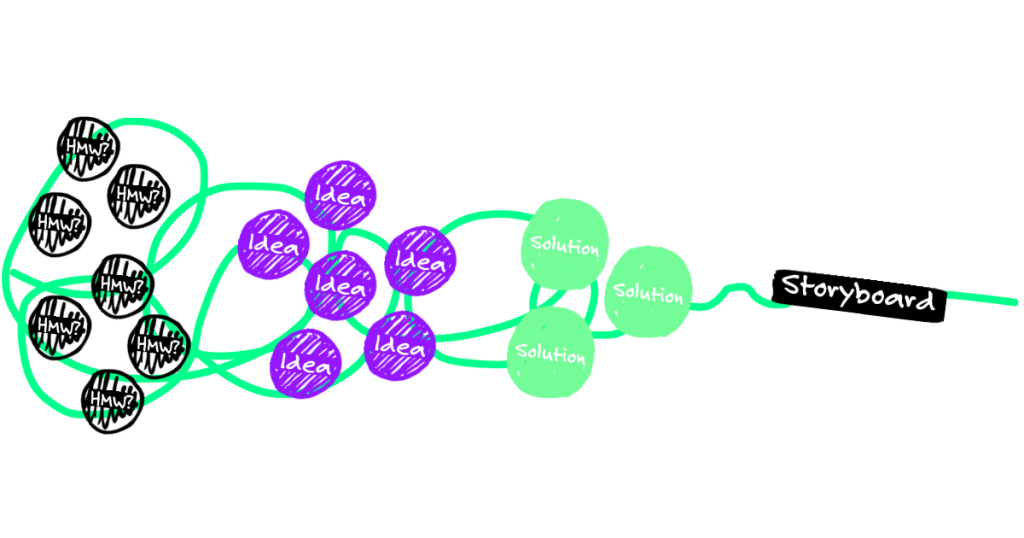💡 What is a Product/Service Design Sprint?
In this guide, we will explore the concept of a Product/Service Design Sprint, as an adapted version of the design sprint method developed by Jake Knapp from Google Ventures. This structured process aims to quickly generate and design product or service concepts, fostering efficient idea generation and iteration.The design sprint involves a series of collaborative activities, such as brainstorming, sketching, and prototyping, aimed at rapidly exploring and refining innovative concepts for a product or service. Best conducted as a team workshop, the design sprint helps align stakeholders and team members.
🚀 Why is Product/Service Design Important for Startup Founders?
Product/Service Design is crucial for startup founders as it provides a systematic approach to developing innovative concepts. By engaging in a design sprint, you can:
- Quickly Address Key Business Questions: A design sprint facilitates the rapid exploration of critical business questions within a highly collaborative workshop.
- Mitigate the Risk of Unsuccessful Investments: The design sprint minimizes the risk of investing time and resources in an idea that may not prove successful in the long run.
- Foster Unified Understanding: It fosters a unified understanding of the product challenges among all relevant stakeholders.
- Promote Ownership: A design sprint provides a sense of ownership for all parties involved in the process.
🗒️ Product/Service Design Step-by-Step
In the following step-by-step guide we will embark on a structured product/service design journey. From role assignments and team ice-breakers to defining crucial questions, creating customer personas, and sketching solutions, this framework ensures a creative and collaborative process. Let’s explore each step to craft innovative and user-centric products or services seamlessly.
✅ Step A: Kick-off
- Role Assignment: As mentioned a design sprint is best conducted as a workshop with the whole team. To kick-off the workshop you want to establish the key roles within the team. Designate a facilitator, responsible for guiding the team through the sprint, and a decider, who makes final decisions.
- Team Ice Breaker: Start with an ice-breaker fostering a positive and collaborative atmosphere for you and your team. Try out the “Two Truths and a Lie” game. You and your team members can each write two true statements and one false statement about yourselves on post-it notes. As you share your statements, take turns guessing the lies. This activity is a great way to break the ice, creating a positive atmosphere as you and your team share personal anecdotes and build a more open and engaging dynamic.
✅ Step B: Sprint Questions
- Define Sprint Questions: Continue by formulating key questions that will guide you and your team throughout the design sprint . Collaboratively define essential questions addressing problem statements, user research, goals, success metrics, and constraints. Record your questions on post-its, and after a voting process, choose the most important questions for further discussion.
✅ Step C: Customer Journey Mapping
- Establish your Customer Personas: Understanding the user’s interactions and touchpoints is crucial for effective product/service design. Start by creating customer personas, describing your ideal customers in terms of demographics, behavioral and psychographic traits. Dive deeper into understanding users through empathy mapping, capturing their thoughts, feelings, and motivations. Outline the specific tasks, challenges, pain points, and gains your users encounter.
- Map Customer Journey: Start by first individually sketching a simple customer journey map, emphasizing steps and touchpoints a user goes through with the desired journey in mind. Now, each team member quickly presents their journey, and after each presentation, the team selects the steps they find most crucial. Collaboratively create a common journey by integrating the steps selected as most important.
✅ Step D: "How Might We...?" Questions
- Formulate HMW Questions: Reframing challenges using “How might we…” questions encourages a solution-focused approach. Review your customer personas and journey, and start by noting down any challenges you detect in the form of HMW questions. For example “long and complicated check out” → “How might we make the check out process more intuitive?” Once you collect all HMW questions, categorize them into logical groups, such as customer acquisition, UX, or purchase.
- Select the most crucial HMW Questions: Finally each team member votes to select the most important HMW questions to focus on. The selected questions should be tackled during this design sprint.
✅ Step E: Best Practice Lightning Demos
- Research Inspiring Solutions: In the next step, each team member individually researches best practices for products, services, and UX elements inside and outside their industry, focusing on solving the challenges at hand.
- Present Lightning Demos: Then each participant has 5 minutes to present their inspiring solutions, showcasing websites, photos, and videos to the rest of the team. This exercise shall help inspire the team for the next task and validate first ideas.
✅ Step F: Solution Sketches
- Review and Note Down Ideas: Next each team member gathers some sheets of paper and a pen, and revisits the HMW questions, customer journey, and lightning demos. Everyone notes down their thoughts and sketches initial ideas for personal reference, focusing on capturing ideas rather than perfection.
- Sketch Crazy 8: Now each team member takes a sheet of paper and folds it so they get 8 boxes. Then everyone sketches eight different ideas in eight minutes, experimenting with variations.
- Draw Solution Sketches: Choosing one or more of the 8 ideas, team members draw visual explanations of their solutions on letter-sized paper. Completed solution sketches are then photographed and sent to the facilitator for compilation.

✅ Step G: Solution Gallery
- Solution Exposition and Vote: A silent exposition and subsequent discussions help the team choose the most promising solutions. Therefore, the facilitator displays all solution sketches, the team members silently review the others sketches and vote on the solutions or elements of them they find appealing.
- Speed Critique and Final Selection: Each participant then has 5 minutes to explain their solution to the group, encouraging comments, questions, and critique from others. In the final voting phase, participants select their two favorite solutions or elements. The decider has supervotes, guiding decisions for further development.

✅ Step H: Storyboard
- Draw the Storyboard: Finally you want to create a visual representation of the new solution’s user journey through a storyboard that aids in capturing and organizing ideas. Based on the selected solutions your team now works as a group, using a whiteboard grid to describe each step of the user’s journey. Starting with the opening scene, the team details touchpoints, using visuals, words, and scribbles. This storyboard serves as an initial blueprint for later developing your prototype or even MVP.
In conclusion, engaging in a Product/Service Design Sprint is a powerful approach for you to drive innovative product or service design, align teams, and optimize resources in the early stages of product development. By following these step-by-step guidelines, you can foster creativity, make informed decisions, and ultimately deliver a well-designed and user-centric product or service.

Get Ready-to-Use Templates and Practical Guidances . 🚀
Check out our basecamp for founders for practical guidance and templates on Market Environment Analysis and many more business building methodologies.

